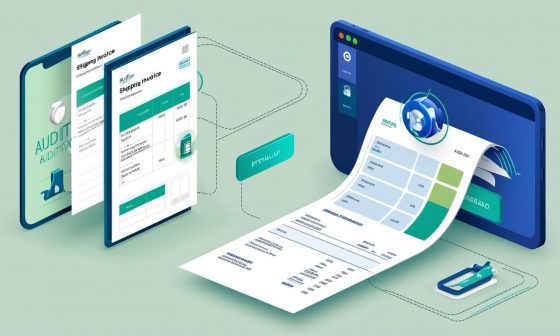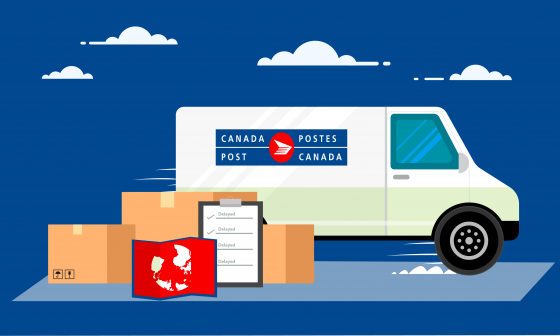Do you know that shipping fees have a significant impact on customer retention and acquisition? As such, businesses need to adequately understand FedEx and UPS surcharge fees in detail to improve their profit margins.
Ecommerce businesses are required, by their very nature, to ship packages and sometimes these may incur shipping surcharges. The bloom and disrupting growth in the eCommerce sector has made it mandatory for businesses to understand these extra shipping expenses.
What is a shipping surcharge?
It is an additional fee added to the shipping cost by a carrier. Shipping surcharges compensate for various extra expenses involved in special service, additional handling, or other miscellaneous charges inherent in shipping products with exceptional requirements or circumstances.
Simply put, a shipping surcharge is any fee for extra services that are added to the base cost of transporting an item. They are often categorized as handling charges or service fees. Regardless of how they are quoted, any additional fee can be termed shipping surcharges.
The plethora of shipping surcharges can make it very confusing for merchants to correctly assess what might be added to their base transportation costs. Moreover, most carriers like FedEx and UPS apply different surcharges to ordered shipments to offset transport and additional handling expenses.
What are the different types of surcharges imposed by carriers?
- Fuel surcharges
- Winter surcharges
- Congestion surcharges
- Packaging surcharges
- Weekend deliveries surcharges
- Signature on delivery surcharges
- Insurance surcharges
- Peak season surcharge shipping
- Weekly service surcharge
- Residential surcharge
Carriers use surcharges as effective tools to manage delivery volumes by anticipating and steering demand.
For instance, at the beginning of 2018, UPS and FedEx raised many of their common surcharges by almost 20% as a strategy to streamline demand. And last year in 2019, UPS raised the residential surcharge during the peak holiday season. However, unpredicted volumes made for a 5.5% dip in profits through last quarter despite the cost of ground shipping being raised by 4.9%.
What is the average cost of these surcharges?
Surcharges make up to 40% of your shipping costs. On average, fuel surcharges alone across over 2.5 million shipments result in an additional $2.2 million dollar cost for those shipments (approximately $0.88 more per package). Both UPS and FedEx calculate their ground fuel surcharge according to the index reference based on the U.S. Average On-Highway Diesel Fuel Price.
Similarly, 594 oversize shipping surcharges resulted in an average cost increase of approximately $50.00 per shipment. For both FedEx and UPS, shipments cannot exceed the dimensional girth of 130 inches.
Saturday surcharges are expensive because they cost them an additional $13.49 per package. There is also a surcharge applicable for packages that require a signature upon delivery. Adult signature surcharges average $4.15 while direct signature surcharges average $3.12 and indirect ones average $1.92.
Similarly, when the address specified on the shipping label is wrong, the carriers deliver it anyway after correcting it. But an address correction charge is added to the invoice. The average cost of an address correction surcharge on ground deliveries is $10.83. The other average surcharge fees include declared value surcharge – $10.91, weekly service charge – $12.65, and a delivery area surcharge – $2.58. Read more about FedEx and UPS surcharges in 2020.
How do surcharges work?
To understand the working of shipping surcharges, consider the following points.
USPS imposes the following shipping surcharges
- Non-machinable mailpiece fee: Imposed on mail that has to be sorted out of the standard and automated mail process.
- Fuel surcharge: To cover fuel costs which fluctuate inevitably with the prevailing cost of fuel. It is applied as a percentage of the base shipping rate.
FedEx has clearly outlined shipping surcharges
- International fuel surcharge: The percentage for this is subject to weekly adjustments depending on the price of fuel per gallon of jet fuel.
- Delivery/pick up surcharge: International shipments that are picked up or delivered from less accessible areas are charged an out of pick-up or out of delivery area surcharge.
- Handling surcharge: This is applied to packages with dimensions more than 121 x 76 centimeters
- Oversize charge: This is applied to the shipment with package dimensions more than 243cm long or 330cm combined length and width.
- Third-party billing surcharge: This is applied to all shipments billed to third parties.
UPS’ shipping surcharges
- Fuel Surcharge: UPS uses index-based prices to adjust their charges (based on the US gulf coast kerosene-type jet fuel prices).
- UPS carbon neutral fee: If you care about the climate impact and want to do something about it then this one’s for you!
- Freight collect refusal fee: This is applied when the third party consignee fails to pay the shipping charges or if an account number is invalid.
- Address correction: This is billed to the shipper for failed delivery due to incorrect address.
- Over maximum limits fee: This is applied to packages weighing more than 70 kgs or more than 274cm in length.
Shipping surcharges will have a significant impact on your overall shipping costs. However, they can lead to a lot of confusion as well especially when merchants try to calculate the total shipment costs. Are there ways to avoid them?
Most carriers calculate their rates based on a number of factors like profit margins and business growth projections.
How can you avoid the surcharge fee to save on your shipping costs?
- Gain a better understanding of how shipping surcharges are impacting shipping costs and what alternatives might reduce or eliminate them altogether.
- Double-check your address or you can also invest in shipping software that automatically checks and corrects the concerned delivery addresses to avoid address related surcharges.
- It can be exhausting to keep track of the surcharges because the rates change frequently. Fuel surcharges for private carriers change weekly while the rest are typically updated on an annual or bi-annual basis. Utilizing a third-party logistics provider will help businesses itemize their shipments accounting.
- Explore other regional or local carrier options if you regularly ship to these areas.
- Understand and be aware of what different carriers classify as “oversized packages”.
- For residential delivery surcharges, check if you can budget the charges in your calculations and pass this onto the recipient or deliver items to a business address instead.
- Negotiate for reduced fuel surcharges while considering the prevailing fuel market.
Ensure you identify the various types of surcharges and associated fees. This will help you make prudent choices about how the packages will be shipped. Further, you can implement various shipping tactics like renegotiating contracts with carriers to reduce the overall shipping costs.
Finally, an in-depth automated audit will unearth the overcharges recurring in the form surcharge fee on your shipping invoice. Would you like to have your FedEx, UPS, or DHL invoices audited to save up to 16% on shipping costs? Try AuditShipment free for 14 days.






